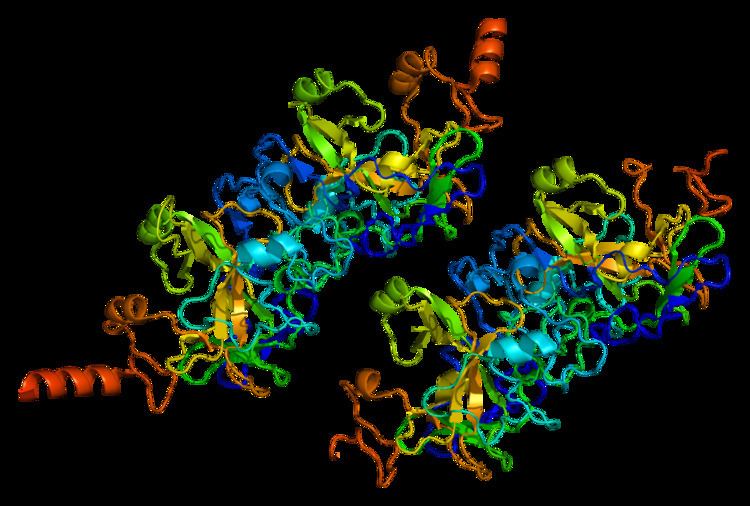Entrez 10919 | Ensembl n/a | |
 | ||
Aliases EHMT2, BAT8, C6orf30, G9A, GAT8, KMT1C, NG36, euchromatic histone lysine methyltransferase 2 External IDs MGI: 2148922 HomoloGene: 48460 GeneCards: EHMT2 | ||
Euchromatic histone-lysine N-methyltransferase 2 (EHMT2), also known as G9a, is a histone methyltransferase that in humans is encoded by the EHMT2 gene. G9a catalyzes the dimethylation of H3K9 (i.e., histone H3 at lysine residue 9), which is a repressive histone modification.
Contents
Function
A cluster of genes, BAT1-BAT5, has been localized in the vicinity of the genes for TNF alpha and TNF beta. This gene is found near this cluster; it was mapped near the gene for C2 within a 120-kb region that included a HSP70 gene pair. These genes are all within the human major histocompatibility complex class III region. This gene was thought to be two different genes, NG36 and G9a, adjacent to each other but a recent publication shows that there is only a single gene. The protein encoded by this gene is thought to be involved in intracellular protein-protein interaction. There are three alternatively spliced transcript variants of this gene but only two are fully described.
G9a and G9a-like protein, another histone-lysine N-methyltransferase, catalyze the dimethylated state of H3K9me2. G9a is an important control mechanism for epigenetic regulation within the nucleus accumbens, particularly during the development of an addiction, since G9a opposes the induction of ΔFosB expression and is suppressed by ΔFosB. G9a exerts opposite effects to that of ΔFosB on drug-related behavior (e.g., self-administration) and synaptic remodeling (e.g., dendritic arborization – the development of additional tree-like dendritic branches and spines) in the nucleus accumbens, and therefore opposes ΔFosB's function as well as increases in its expression.
Interactions
EHMT2 has been shown to interact with KIAA0515 and the prostate tissue associated homeodomain protein NKX3.1.
